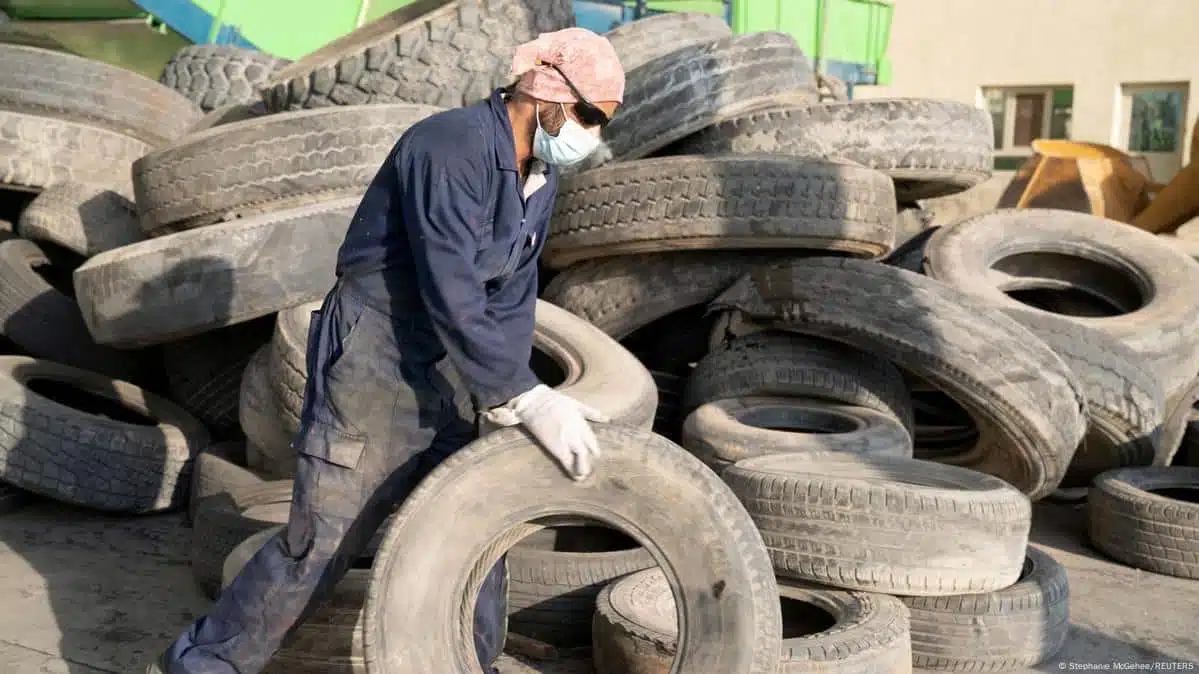La pollution generated by tires is as alarming as that from engines, a little-known aspect of electric vehicles

The pollution generated by tires has become an environmental problem as alarming as that caused by vehicle engines. Although the main focus has been on exhaust emissions, recent studies have revealed that even electric vehicles are not exempt from this issue. Tire wear produces contaminant particles that raise similar concerns as combustion engines, highlighting the urgent need to address this often-ignored aspect of vehicular pollution.
The pollution generated by tires is as alarming as that from engines
In the automotive world, attention has primarily focused on emissions from combustion engines, but there is another silent enemy: tires. Despite the environmental advantages of electric vehicles, they generate a significant amount of pollution due to tire wear. These components, made from complex mixtures of materials, degrade and release contaminant particles into the environment, affecting both air quality and human health.
Components and wear of tires
Modern tires are complex products. They are made up of 19% natural rubber and 24% synthetic rubber, in addition to metal and other materials such as carbon black, textiles, zinc oxide, and sulfur. This cocktail of over 100 different chemical compounds contributes to the degradation of tires, releasing contaminant particles into the air.
The asphalt acts like a cheese grater for tires. It is estimated that a car loses between a quarter of a kilogram and two kilograms of rubber per year, with a global average of 0.8 kg. This often-ignored pollution is as severe as that from engines, affecting not only the environment but also having health implications.
Electric vehicles: an unexpected challenge
Although electric vehicles are seen as a solution to the problem of vehicular pollution, they present an unexpected challenge. The acceleration capability of electric cars is superior to that of traditional vehicles, leading to greater tire wear. Some estimates suggest that emissions of particles not coming from exhaust pipes of electric vehicles can be up to five times higher than those from internal combustion vehicles.
Effects on health and the environment
The environmental impact of pollution generated by tires has gone unnoticed for years. However, recent studies indicate that these tiny particles have consequences comparable to emissions from engines. Trapped in the air, they can cause respiratory problems and severely affect urban air quality.
A group of experts, including engineers, ecologists, doctors, and air quality analysts, emphasizes the need to increase investment in research on this form of pollution. Their goal is to better understand the associated risks and seek solutions that minimize impacts on both human health and the ecosystem.
Initiatives to mitigate the problem
Projects like The Tyre Collective, a research initiative from the Royal College of Art and Imperial College London, aim to reduce the environmental impact of tires. These investigations seek to find innovative ways to collect and reuse shed particles before they pollute the environment.
In parallel, promoting the use of public transport and utilizing alternative fuels could also contribute to the overall reduction of vehicular pollution.
The alarming hidden threat of tires in pollution
The pollution generated by tires is an environmental problem that has largely remained in the shadows. Despite the attention given to emissions from combustion engines, especially in the context of the transition towards cleaner transportation, the significant contribution of tires to the problem has been underestimated.
As electric vehicles become more common, it is alarming to discover that their tires can be, in some cases, even more polluting than those of combustion engines. This is due to the faster acceleration of electric cars, leading to greater tire wear, and consequently an increase in the emission of tire wear particles or TWP (Tyre Wear Particles).
Tires contain a complex mixture of over 100 chemical compounds, including natural rubber, synthetic rubber, textiles, and metals. These components, when in constant contact with asphalt, release significant amounts of microplastics and contaminant particles into the environment. It is estimated that each car loses between 0.8 kg and 2 kg of rubber per year, which disperses into the air and soil, posing a risk to both the environment and human health.
A growing body of research, such as the project The Tyre Collective, is attempting to mitigate this problem by developing technologies to capture these particles before their release into the environment. However, this is only part of the solution. A concerted effort is required that includes innovation in more sustainable materials for tire manufacturing, as well as more effective waste management policies.
Ultimately, reducing tire pollution must form an integral part of strategies to lower the environmental footprint of transportation, recognizing that these automotive components are, in fact, as crucial and dangerous as engines in the battle for a cleaner and healthier future.




